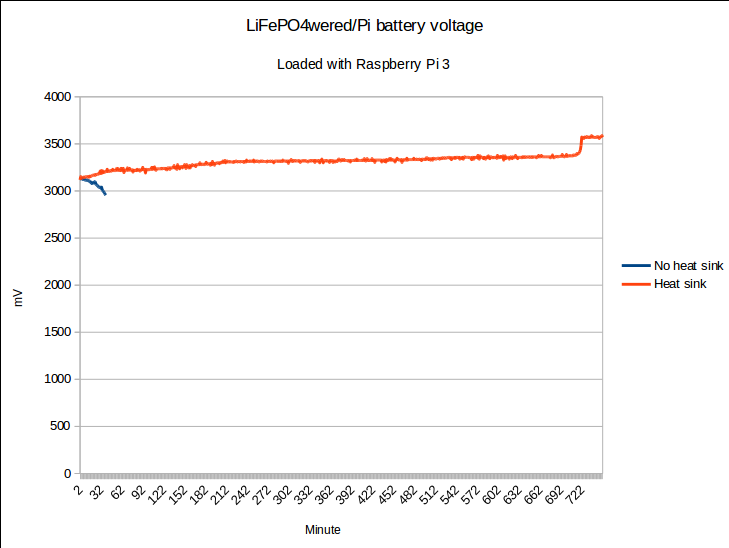I made a graph of the battery voltage of the LiFePO4wered/Pi when starting to charge from empty, with the load Raspberry Pi 3 running (idle) and WiFi connected:

As you can see, the heat sink makes a big difference. Without the heat sink, the charge current reduces so much due to thermal limiting that the battery discharges and the Pi shuts down. With the heat sink, it charges fine.
Another interesting titbit. Since the Pi 3 in my run time test runs for 1:15, and the battery capacity is 550 mAh, we can deduce that the Pi 3 draws ~440 mA in my test setup. In this graph we see that fully charging the LiFePO4wered/Pi with this load takes 12 hours. This means the charge current to the battery is ~45 mA. Adding these two values gives 485 mA, very close to our set point of 480 mA with SJ1 closed. This suggests that with the added heat sink, the LiFePO4wered/Pi is not thermally limited in these conditions.
It should also be noted that a Pi 3 under heavy load takes more current than the charge current set point, and a plugged in LiFePO4wered/Pi will likely not be able to keep it running indefinitely (depending on the load).
 Patrick Van Oosterwijck
Patrick Van Oosterwijck
Discussions
Become a Hackaday.io Member
Create an account to leave a comment. Already have an account? Log In.